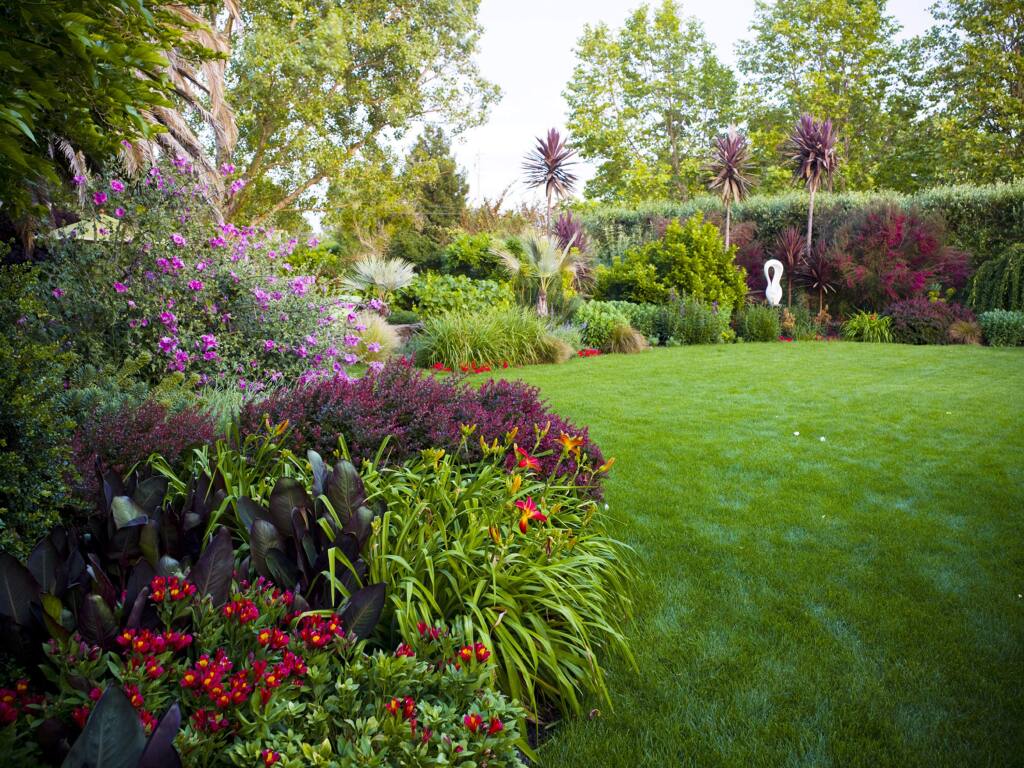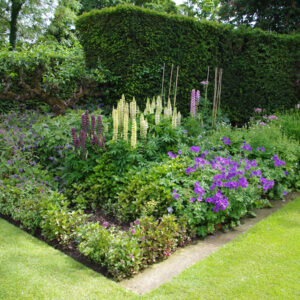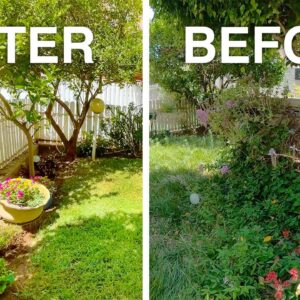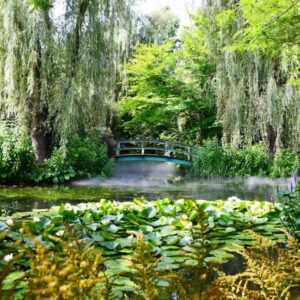Creating a stunning local garden is no small task. It requires careful planning and an eye for detail in order to create a space that can be enjoyed for years to come. Our garden club experts are here to provide the ultimate guide for creating your dream outdoor oasis, from analyzing your site, choosing the right plants, utilizing plant pairs, designing your space and using organic materials to maintaining your garden.
Let us take you on a journey of discovery that will allow you to transform any area into a beautiful and flourishing environment. Together we can find inspiration in nature while creating something truly special.
Key Takeaways
- Analyzing the site is essential, considering terrain, climate, and sunlight exposure.
- Research native plant species that thrive in similar conditions.
- Design your space with contrasting colors, foliage texture, and organic materials.
- Proper watering techniques are essential for successful plant growth.
Analyze Your Site
In order to create a stunning local garden, it is essential to analyze the site carefully, taking into account the terrain and climate as if one were peeling back an onion layer-by-layer.
Assessing sunlight is of paramount importance. Knowing what season offers the most hours of sun exposure will inform which plants are suitable for your garden.
Additionally, soil testing should be conducted to determine soil acidity and nutrient levels. Understand that different types of plants have different preferences in terms of these values and choose accordingly.
It is also important to consider whether or not you need assistance from landscaping professionals when assessing topography or drainage issues.
Finally, research native plant species in your region that thrive in similar conditions so you can create a harmonious outdoor sanctuary while benefitting the environment around you.
With this information at hand, you can then move onto choosing the right plants for your dream garden.
Choose the Right Plants
Selecting the appropriate plants is an essential component for a successful outdoor space. Careful consideration must be taken when making decisions for the garden, as each species of plant has unique needs and requirements that can vary greatly from one another.
Local native species often have the greatest advantage in most landscapes since they are already adapted to the local climate and soil fertility. However, even among native plants there is variation in water and soil needs, sunlight exposure, and other factors that should be taken into account when selecting suitable specimens.
In addition to considering regional conditions, it is important to assess individual site characteristics such as available sunlight, drainage quality, or any existing features which could affect proper plant growth. It may also be necessary to amend soils with organic matter if needed in order to improve fertility or increase microbial activity.
With careful analysis of all these elements combined together, the right choice of plants can help create a beautiful outdoor space that will thrive year after year with minimal maintenance costs.
By selecting plants with complementary bloom times and foliage textures for visual variety within your landscape design plan you can create a well-rounded aesthetic effect that provides seasonal interest throughout the growing season. Furthermore, pairing certain species together can help enhance their individual performance while creating an overall more resilient garden system overall.
Utilize Plant Pairs
By pairing certain plant species together, gardeners can optimize growth and produce a more resilient system overall. This practice is known as companion planting, and it helps to cultivate soil in ways that are beneficial for both plants involved. Gardeners should consider the size of each plant, as well as their individual water needs before deciding on which pairs work best together. Additionally, they may want to take into account whether one plant provides shade or nutrients for the other if they wish to get optimal results out of their pairings.
In addition to pairing plants based on their size and water/sunlight requirements, gardeners should also consider what types of pest management benefits they will receive from their chosen combination. Some plants act as natural repellents against pests while others attract helpful insects such as bees or ladybugs in order to keep balance in the local ecosystem. By properly researching which plants work best with one another in terms of pest control, gardeners can create a thriving environment that requires minimal maintenance from them.
The most successful gardens incorporate both aesthetics and functionality into their design plans – this includes utilizing effective plant pairings for optimal growth and pest management. With proper research, planning, and knowledge about each species’ individual needs, gardeners can create stunning gardens with resilient systems that will continue to thrive regardless of environmental changes or disruptions.
These carefully crafted gardens are sure to bring beauty and joy to any outdoor space – now it’s time to design your space accordingly!
Design Your Space
Creating a visually stunning and efficient outdoor space requires careful consideration of the plants chosen for companion planting. Designing your space should include layering colors, foliage texture, and organic materials to create an aesthetically pleasing garden.
Here are four tips from our Garden Club experts:
- Utilize contrasting colors that draw attention to specific areas of the garden
- Incorporate variety in foliage texture to provide visual interest throughout the year
- Plant shrubs as a backdrop for colorful perennials and annuals
- Use organic materials like mulch or compost to retain moisture and improve soil quality
By considering these design elements when creating your own unique local garden, you can ensure a balanced composition of plants offering both beauty and practicality.
Moreover, integrating seasonal changes into your design will allow for flexibility in adding new plants or rearranging existing ones over time as desired. With thoughtful planning and execution, you can create an inviting outdoor space that reflects your personal style while being beneficial to local wildlife too.
Use Organic Materials
Organic materials, such as mulch and compost, can contribute to an inviting outdoor space by maintaining moisture in the soil and adding texture to the garden.
Composting basics involve gathering organic waste from kitchen scraps, yard debris, and other sources. This material is then broken down into a nutrient-rich fertilizer for plants.
Sustainable sources of mulch include leaves, grass clippings, straw or hay, wood chips, sawdust or bark. Mulch helps retain soil moisture and reduce weed growth while adding organic matter to the soil which can help with drainage issues.
Organic options also improve overall soil health by providing essential nutrients for root development and encouraging beneficial insects like earthworms that aerate the soil naturally. Additionally, using natural materials minimizes environmental impact since they are biodegradable and free from harmful chemicals unlike synthetic alternatives.
Not only do organic materials offer various benefits but they also enhance the aesthetic appeal of any garden space with their vibrant colors and textures. They provide a unique look that can be tailored to fit any landscape design while giving your garden a more natural feel than conventional options.
Using organic materials in your local garden is an excellent way to create a stunning outdoor space that is both functional and aesthetically pleasing while utilizing sustainable sources that benefit both you and the environment. With proper selection of composting basics and mulching techniques for your specific needs it’s easy to achieve this goal without compromising on quality or style. Moving forward with regular maintenance will ensure your garden stays looking beautiful all year round.

Maintain Your Garden
Maintaining a garden can be a rewarding experience, but also requires the application of proper techniques.
Watering your plants correctly is essential for successful growth; in addition, pruning and trimming are important for shaping your plants and keeping them from becoming overgrown.
Lastly, effective weed and pest control is necessary to ensure your garden remains healthy and vibrant.
Watering Techniques
Adopting a careful watering technique is essential for ensuring the optimal growth of plants in a local garden. Proper planning of irrigation, as well as soil aeration, can help ensure that enough water reaches the roots while avoiding overwatering.
Watering should be done early in the morning or late evening to reduce water loss due to evaporation. Furthermore, it is important to use an appropriate amount of water and not overwater plants as this can lead to root rot and other problems.
It is also necessary to adjust watering patterns according to weather conditions, such as during periods of heavy rain or intense heat. By following these techniques, gardeners can optimize their local gardens for maximum health and success.
With these considerations in mind, pruning and trimming are important next steps in creating a stunning local garden.
Pruning and Trimming
Regular pruning and trimming of plants is essential for promoting healthy growth and development. According to recent studies, up to 30% of a plant’s growth is attributed to proper pruning techniques. Doing so helps to keep plants looking their best, as well as encourage the desired shape and size.
Before pruning or trimming, it is important to assess the overall condition of the plant, including its companion planting needs and soil preparation requirements. Tools should be sharpened or replaced regularly in order to ensure clean cuts that won’t damage the plant’s bark or foliage. Removing dead, diseased, or damaged branches can help reduce pest infestations while also aiding in better air circulation within the garden.
With consistent maintenance and attention, these practices will yield rewarding results when cultivating a stunning local garden. The next step in creating an ideal outdoor space involves weed and pest control measures.
Weed and Pest Control
Now that the pruning and trimming of your garden is complete, it’s time to focus on controlling weeds and pests.
One of the best methods for weed control is to use mulch which will help suppress weed growth.
For pest control, natural predators such as ladybugs are an effective way to keep insects from damaging plants.
Additionally, companion planting by mixing different plant varieties together can discourage harmful pests while encouraging beneficial ones.
By using these natural methods you can ensure that your garden remains healthy and free of pests and weeds.
Frequently Asked Questions
What are the most popular plants for local gardens?
Native species are popular for local gardens due to their hardiness and ability to thrive in the area’s climate. Container gardening with small, low-maintenance plants is also popular, as it can fit into any size space.
What is the best way to keep pests away from my garden?
Alluding to the natural balance of predator and prey, one beneficial way to keep pests away from a garden is by introducing natural predators such as birds or spiders. Additionally, companion planting can be effective in deterring certain pest species from gardens.
What should I consider when choosing plants for my garden?
When selecting plants for a garden, one must consider climate impact and the range of plant selection available to ensure successful growth. Factors such as soil type, water requirements, and sunlight should also be evaluated for optimal outcomes.
How often should I water and fertilize my garden?
Though the optimal watering frequency and fertilizer type depend on a variety of factors such as climate, soil type, and plants chosen, generally speaking most gardens should be watered deeply every one to two weeks and fertilized using slow-release organic fertilizers such as compost or manure.
What type of soil should I use for my garden?
When selecting soil for a garden, the type of plants being grown should be taken into consideration. Different plant varieties may require different types of soil, such as sandy or clay-based soils. Organic matter can also be added to enrich the existing soil and create better conditions for healthy growth.
Conclusion
Gardening is an endeavor that requires care and attention to detail. With the right planning, materials, and maintenance, a beautiful local garden can be created.
By taking into consideration what plants will thrive in your area and carefully designing the layout of your garden space, you can create a stunning masterpiece that will bring joy for years to come – like a painting on canvas.
With some patience and effort, the process of creating a local garden can be enjoyable and rewarding.





